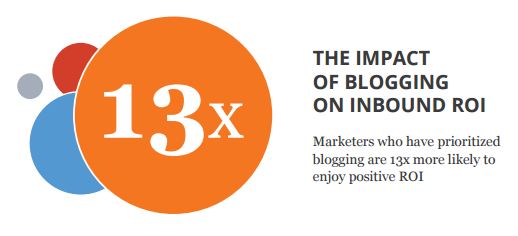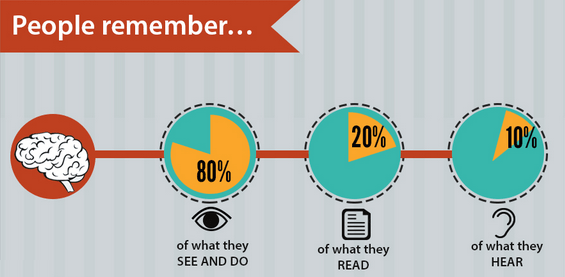Top of the Funnel Content (original) (raw)
Table of Contents: How to Create Content That Will Move Your Leads through the Sales Funnel
- How does content marketing fit into the sales funnel?
- Top-of-funnel content
- Middle-of-funnel content
- Bottom-of-funnel content
- Determining what to create
- Creating your content
- After you publish
Either way, this content shouldn’t be too “salesy.” You should include links to other pages on your site that have more information about your company and products, but the top-of-funnel content itself should primarily serve to generate brand awareness and build positive associations with your company. So what kind of content accomplishes these goals?
Blog posts
If you don’t have a blog, it’s time to make one. Not only do blog posts keep you relevant, generate conversation, and attract site visitors – marketers who blog are 13x more likely to drive positive ROI.

If creating and maintaining a blog sounds like a lot of work to you, I won’t lie – it can be. But even one or two posts a week can be all it takes to show potential clients that your company is up-to-date on the latest trends and issues in your industry, and if you write them about topics that are frequently searched for by your demographic, they can make excellent top-of-funnel content.
Best of all, there are very few restrictions when it comes to blogging. While many traditional methods involve strict guidelines and restraints, your company’s blog is all yours. You are free to publish whatever you want, and if it works with your brand’s image, you might even use it to show a little personality.
Articles
Articles are simply pages on your website that provide useful information to potential customers. Like blog posts, they are made up of text and images, but unlike blog posts, they should not be time-sensitive.
In fact, your goal when writing articles should be to make them “evergreen,” which basically means that they will still be relevant in a few months or years. Even though you may not have been aware of it, there’s a good chance that you’ve been to many other companies’ article pages in the past. Think about the last time you used a search engine to find the answer to a question or problem. Where did you end up?
In case you can’t remember, I’ll use my own most recent search as an example. Last night, I noticed that my shower was draining slowly, so I searched, “how to unclog a shower drain.” The results included articles from a DIY magazine, a local plumbing company, and Home Depot – all of whom could benefit from attracting site visitors with clogged shower drains.
Free guides or tutorials
Free guides can be a great way to attract qualified traffic right from the start. For example, let’s look at why you’re reading this one right now.
What made you want to read about how content marketing can move your leads through the sales funnel? How did you find this guide? I’m going to go ahead and assume that you’re here because you are a marketer or business owner interested in generating revenue through content marketing. If that’s the case, you might be a potential customer.
So why do we give away this information for free, and why should you do the same? Simple – because it attracts potential customers. You may be hesitant to give away knowledge for free, but look at it this way: if someone wants to take a DIY approach to whatever it is that you do, there’s a good chance that information already exists online. Why not create a better, more valuable resource?
The goal isn’t to give away every last company secret – it’s to help your potential customers. And who knows – maybe after reading a few pages of chapters, they’ll decide that they don’t want to do it on their own and give you a call.
Infographics
The last type of content we’ll discuss here is infographics. Although they tend to be very top-of-funnel, and often just serve to generate site traffic, they can be very effective in doing so.
In fact, some of the most visited pages on our own site are infographics like the psychology of color and the Internet in real time. If you’ve seen those pages before (or just now), you’ll notice that although they are hosted on our site and include our company name, that’s the extent of the connection.

That means that even if you only mention your business once (like in the form of a logo), there’s a much higher chance that people will remember it than if you had simply written it in an article. And even if you don’t discuss specific services, brand awareness is the first step towards moving potential customers through your funnel.
We don’t mention our services at all, and that’s because that isn’t what infographics are intended to do. But if you can come up with a topic that is somewhat related to your industry, and have the resources to turn that topic into an infographic, it’s definitely worth a shot.